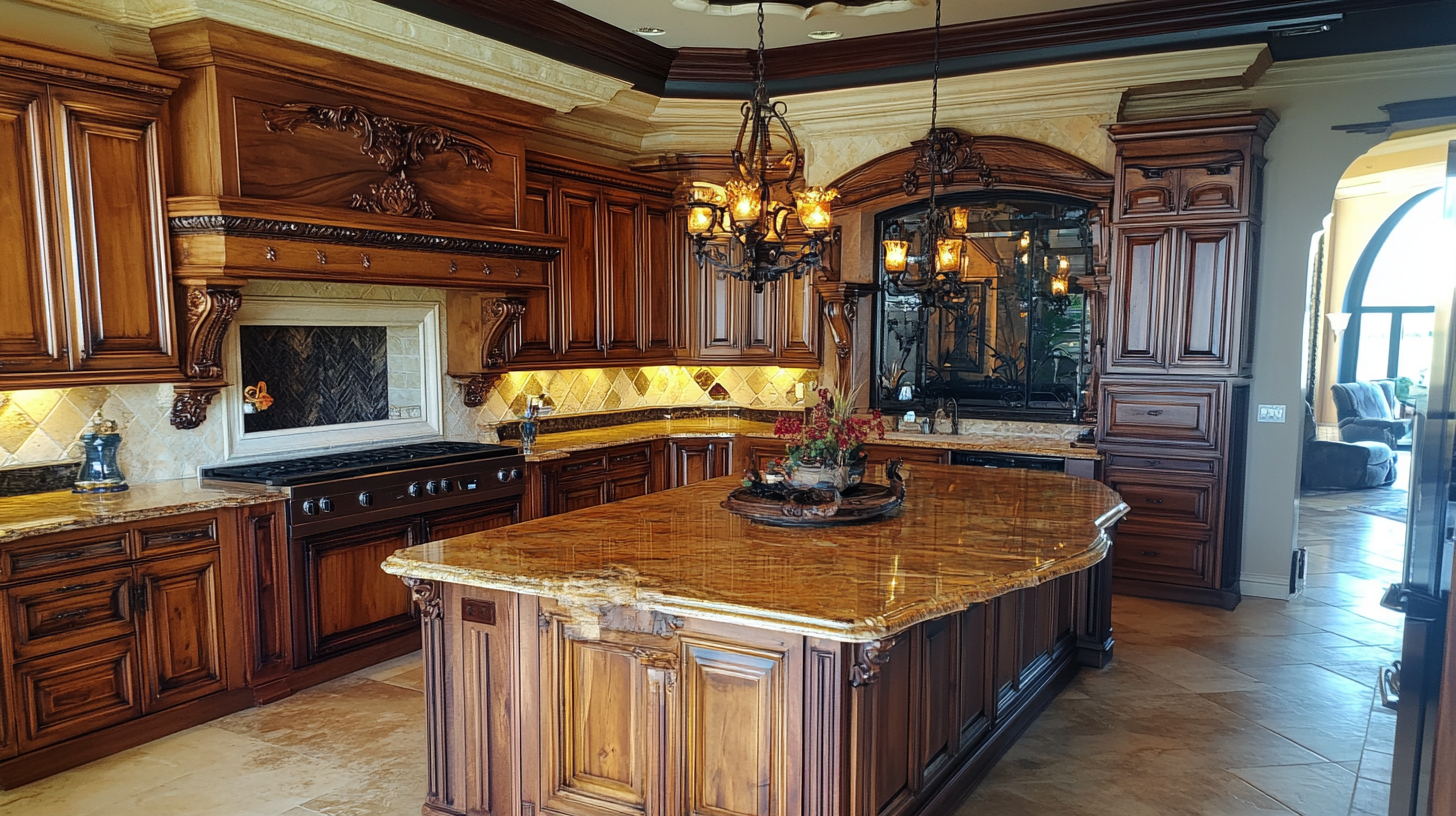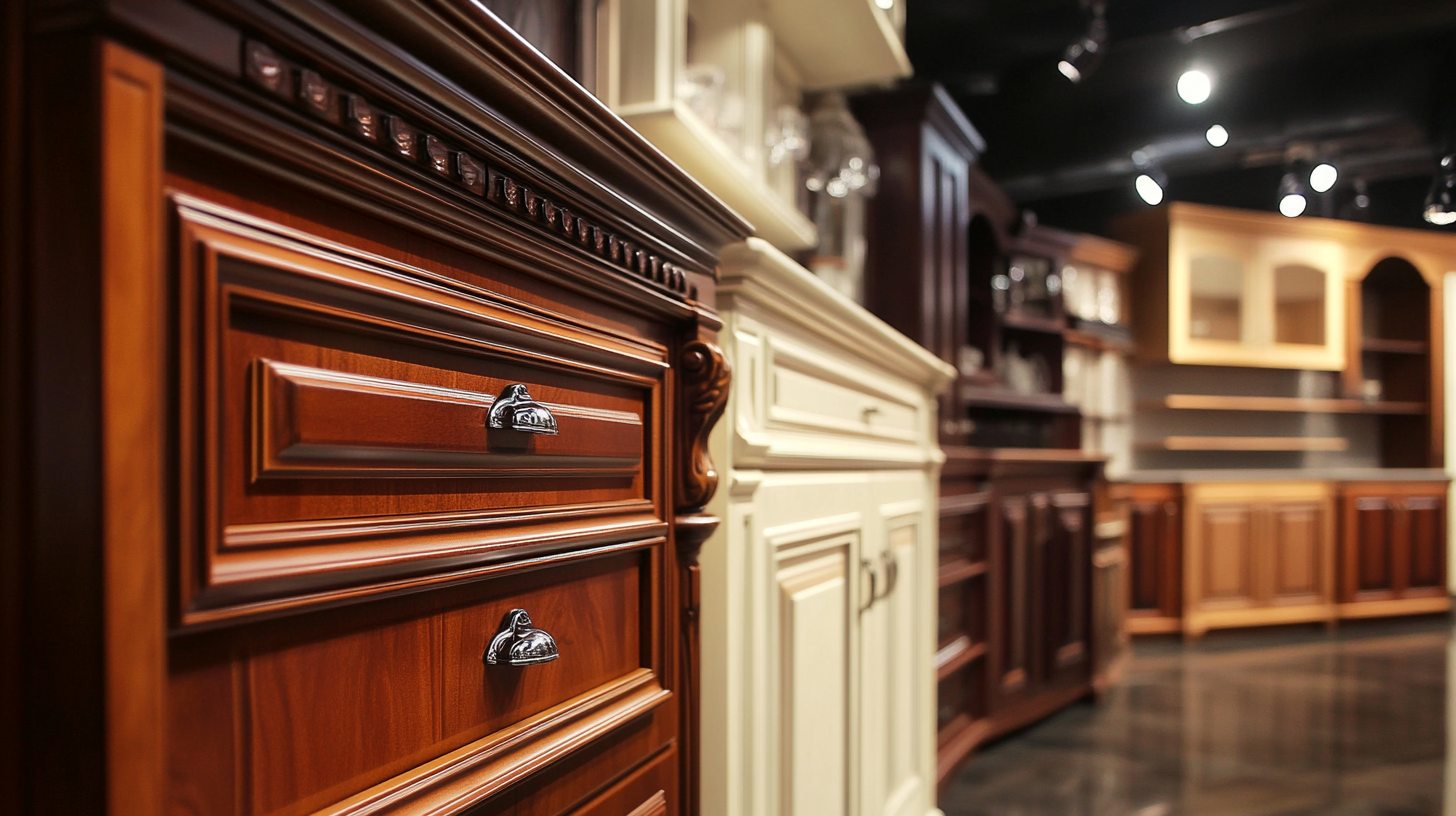Navigating Tariff Challenges How Best Custom Cabinets from China Thrive in Global Markets
In today’s rapidly evolving global market, the trade landscape is fraught with challenges, particularly in light of the escalating tariffs between the United States and China. However, amidst these obstacles, the custom cabinets industry has experienced remarkable resilience and growth. This blog will delve into the strategies employed by Chinese manufacturers to not just survive, but thrive despite the imposition of tariffs. By focusing on quality craftsmanship, innovative design, and strong international partnerships, these manufacturers are redefining the market for custom cabinets. As we explore their journey, we will uncover the tactics that have enabled them to navigate tariff challenges and adapt to an increasingly competitive environment, ultimately leading to a new era of success in global markets.

Strategies for Custom Cabinet Manufacturers to Overcome Tariff Hurdles
Navigating the complex landscape of international tariffs is essential for custom cabinet manufacturers looking to thrive in global markets. Recently, similar challenges have been observed in the pharmaceutical sector, where the U.S. imposed reciprocal tariffs on Indian exports, potentially disrupting a $12.7 billion market. This situation serves as a reminder that manufacturers in different industries must develop strategic responses to mitigate the impact of tariffs on their business.
For custom cabinet manufacturers, leveraging data analytics and market insights is vital to navigate these hurdles. According to a report by the Custom Cabinet Manufacturers Association, around 60% of producers identified tariffs as a significant barrier to competitiveness. To thrive, companies can consider diversifying their supply chains, sourcing materials from tariff-free countries, and exploring alternative markets where competition may be less intense. Additionally, investing in technology to streamline operations can enhance efficiency and lower production costs, enabling manufacturers to maintain competitive pricing despite tariff pressures. By adapting to these challenges strategically, custom cabinet producers can better position themselves in an increasingly complex global marketplace.
Building Resilience: Adapting Business Models in Response to Trade Policies
In the rapidly evolving landscape of global trade, businesses must demonstrate resilience to thrive amidst fluctuating trade policies and tariff challenges. For custom cabinet manufacturers in China, this adaptability has become essential. Many companies are re-evaluating their supply chains, seeking to localize production in key markets to mitigate the impact of tariffs. By establishing partnerships with local suppliers and exploring domestic manufacturing options, these businesses are not only reducing shipping costs but also enhancing their responsiveness to customer demands.
Moreover, embracing technology and innovation has become a cornerstone for survival in this competitive environment. Custom cabinet makers are leveraging data analytics to optimize their inventories and production processes, allowing them to be more agile in adjusting to unpredictable market conditions. Additionally, investing in sustainable practices not only meets the rising consumer demand for eco-friendly options but also positions these companies favorably against competitors in the global market. By adopting flexible business models and focusing on long-term strategic goals, custom cabinet manufacturers in China are setting the stage for sustainable growth, regardless of the tariff landscape.
Navigating Tariff Challenges: How Best Custom Cabinets from China Thrive in Global Markets
| Company Name | Annual Revenue (Million $) | Market Regions | Tariff Rates (%) | Adaptation Strategy |
|---|---|---|---|---|
| ABC Cabinets | 25 | North America, Europe | 20 | Diversification of suppliers |
| XYZ Woodworks | 15 | Asia, Oceania | 15 | Strategic pricing adjustments |
| Elite Custom Cabinetry | 30 | Europe, South America | 25 | Increased local partnerships |
| Premium Cabinets Co. | 20 | North America, Middle East | 18 | Enhanced design offerings |
| Innovative Cabinets Inc. | 22 | Europe, Asia | 22 | Sustainability initiatives |
Quality and Innovation: Key Factors for Competing Globally Against Tariffs
In today’s global market, quality and innovation stand as critical pillars for custom cabinet manufacturers from China striving to thrive amid tariff challenges. As tariffs increase costs and complicate trade dynamics, companies must pivot towards enhancing product quality and innovating their offerings. Recent observations indicate that Chinese firms have been actively pursuing internal reforms and innovation strategies to maintain competitiveness, despite the pressures of these tariffs.
To compete effectively, businesses should prioritize R&D investments to develop unique features and improve the overall user experience of their products. Incorporating advanced materials and sustainable practices can also attract consumers who value quality over mere affordability. Additionally, forming strategic partnerships with suppliers can lead to a more resilient supply chain and operational efficiency.
**Tips for Navigating Tariff Challenges:**
1. Focus on Differentiation: Develop unique selling propositions that set your custom cabinets apart from competitors, appealing to both domestic and international markets.
2. Adapt to Consumer Preferences: Stay attuned to design trends and consumer demands, ensuring your products align with global expectations for quality and innovation.
3. Invest in Technology: Leverage technology to optimize production processes, enhance product capabilities, and remain agile in a fluctuating market environment.

Market Diversification: Expanding Reach Beyond Traditional Borders
In today’s global economy, custom cabinet manufacturers from China are finding innovative ways to thrive despite the numerous tariff challenges they face. One effective approach they have implemented is market diversification, which allows them to reduce their dependency on traditional markets that may be more susceptible to tariffs and trade barriers. By exploring new international markets, these companies can tap into a broader customer base and mitigate risks associated with economic fluctuations in any single region.
Expanding their reach beyond familiar borders not only opens up new sales channels but also encourages adaptation to diverse customer preferences. For instance, by tailoring products to meet the unique tastes and demands of overseas markets, Chinese custom cabinet makers can enhance their competitiveness. This strategy involves investing in market research and fostering partnerships with local distributors, facilitating a smoother entry into regions like Southeast Asia, Europe, and even South America. As these manufacturers embrace innovation and agile business practices, they position themselves not just to survive but to flourish in a rapidly changing global landscape.
Navigating Tariff Challenges: Custom Cabinets from China in Global Markets
Leveraging Technology: Streamlining Production to Minimize Costs and Tariffs
In the competitive landscape of global markets, Chinese manufacturers of custom cabinets are facing significant tariff challenges. To thrive under these conditions, leveraging technology is essential. Streamlining production processes can not only reduce operational costs but also minimize the financial impact of tariffs. Investing in advanced manufacturing technologies, such as automation and robotics, can enhance efficiency and precision, allowing for quicker turnaround times and lower labor costs.
**Tip 1:** Implementing data analytics can help identify inefficiencies in the production line. By analyzing workflow patterns, businesses can optimize resource allocation and reduce waste, ultimately saving money and mitigating tariffs' effects.
Moreover, adopting cloud-based solutions can facilitate better supply chain management. This allows manufacturers to coordinate with suppliers and distributors more effectively, ensuring that materials are sourced at competitive prices and delivered just in time for production. The integration of technology leads to enhanced communication and logistics, which are crucial for maintaining a lean operational model.
**Tip 2:** Embrace digital tools for inventory management. Real-time tracking systems enable businesses to monitor stock levels and demand fluctuations, reducing overproduction and associated costs. This strategic approach not only aligns with technological advancements but also fortifies the company's resilience against tariff-induced price volatility.



Fall into Function: How LaFata Cabinets Prepares Your Kitchen for the Cozy Season


Back-to-School Kitchen Refresh: How LaFata Cabinets Can Help You Stay Organized This Fall


